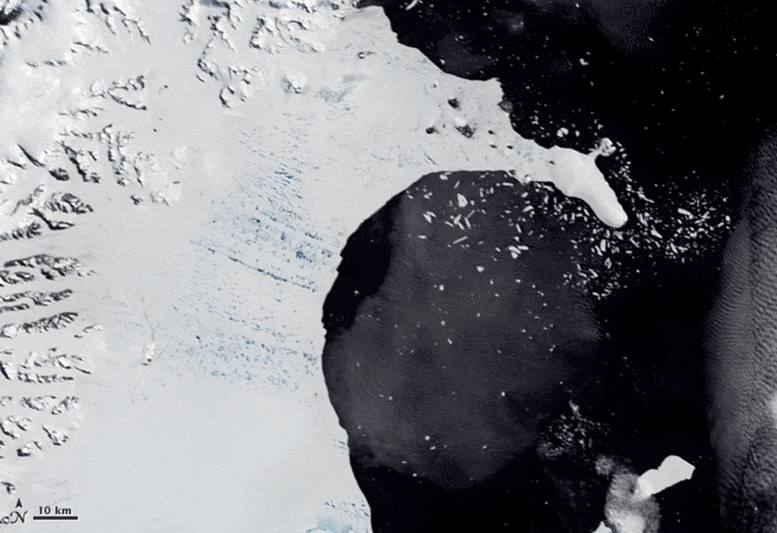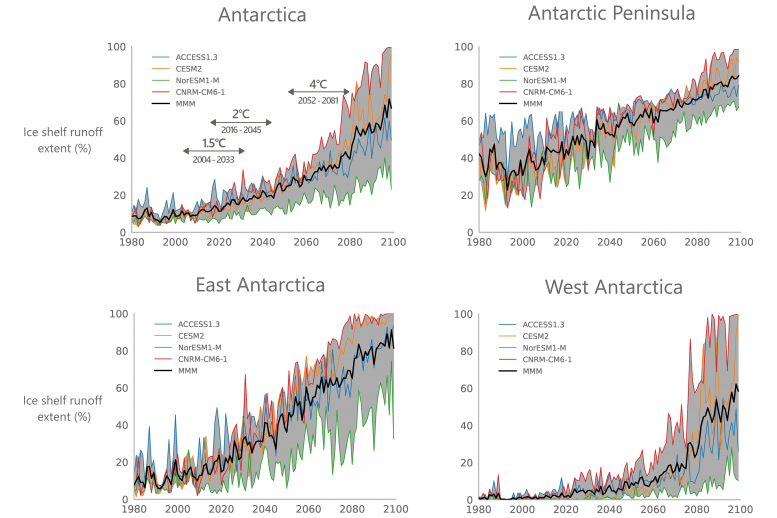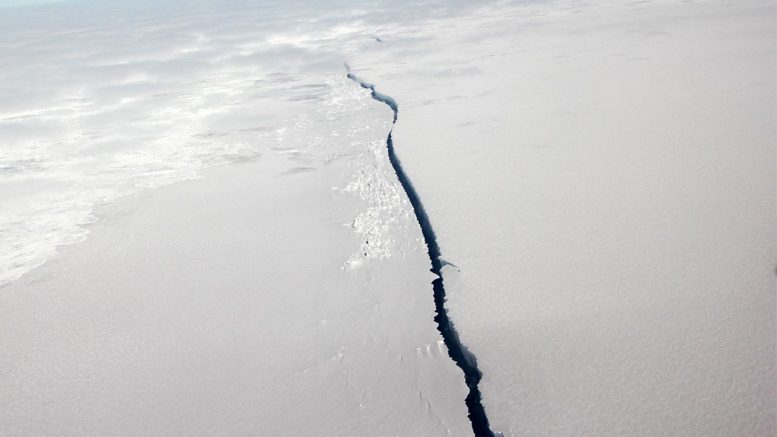Data collected using the MAR climate model developed at ULiège indicate that this could happen as early as the end of this century, or even earlier.
A new study conducted jointly by the University of Liege (Belgium) and the University of Reading (England) suggests that 34% of the Antarctic ice shelves could disappear by the end of the century if the planet warms up by 4°C (7.2°F) compared with pre-industrial temperatures. This melting could lead to a significant rise in sea levels. This study is published in the journal Geophysical Research Letters.
Since the early 2000s, scientists have observed that the Antarctic ice sheet is losing mass at a rate that is accelerating. The ice sheet is a very thick expanse of ice that can cover an entire continent. There are only two ice sheets on Earth: the Greenland ice sheet, which is limited to the land cover, and the Antarctic ice sheet, which extends beyond the continent into the ocean to form large floating platforms. “These ice shelves act like dams and keep the ice on the continent,” explains Christoph Kittel, a researcher at the University of Liege Climatology Laboratory and co-author of the study published in the journal Geophysical Research Letters.[1] Without these platforms, huge amounts of ice would flow directly into the ocean, leading to a consequent rise in sea levels.”

Destruction of the Larsen B platform in Antarctica, images from January 31 to April 13, 2002. Credit: NASA
In summer, the snow on the surface of these platforms melts and water seeps into the small empty spaces in the deep snow layers where it can refreeze and restore the strength of the platform. If the melt is too great, then the excess water seeps deeper into the ice or forms lakes on the surface. The seepage and increased weight of the water as a result of lake formation tends to fracture the ice. And when the ice melt is greater than the snowfall, there is a high risk of platform failure. “The break-up and disappearance of the Larsen B platform in 2002 showed how sensitive these barriers are to melting,” explains Ella Gilbert, co-author of the scientific paper and a researcher in the Department of Meteorology at the University of Reading. “In a few days, about 3,250 km² (1,255 mi²) of ice has been dumped into the ocean.”
For their study, the researchers used the Regional Atmospheric Model (MAR) developed by the Climatology Laboratory of the University of Liege – one of the best models in the world for studying polar climates. The model allowed them to calculate the evolution of conditions that lead to platform failures in Antarctica under different levels of climate warming ranging from 1.5°C to 4°C (2.7°F to 7.2°F). All these scenarios are possible for the end of the century.

Projection of the area of Antarctic shelves that will experience excess surface meltwater. Credit: ULiège
“As temperatures rise, intense summer melt events will be repeated and, above all, will become more intense,” says Christoph Kittel. The meltwater will no longer be able to be absorbed by the snow to refreeze, but will form lakes and seep deeper into the ice of the platforms, which will lead to break-ups.” The study identified platforms where the risk of break-up is high. Four platforms – Larsen C, Shackleton, Pine Island and Wilkins – are therefore considered ‘at risk’ because of their location and predicted melt.
“If temperatures continue to rise at the current rate, we could see even more platform collapse events in the next few years,” says Gilbert. This echoes a previous study by Christoph Kittel, recently published in the journal The Cryosphere,[2] which suggests that climate change in Antarctica may have been underestimated in previous IPCC reports for the year 2100. The climate scientists stress the importance of meeting the targets set by the Paris Agreement as soon as possible, which would limit global warming and the risks of destroying Antarctic platforms. “It is important to act quickly, because we are talking about ten years or even 2040 at the very most before the most pessimistic scenario stands out. Limiting global warming is not just good for Antarctica, preserving the ice shelves means reducing the rise in sea level and therefore the impact that this will have on all our lives,” conclude the two researchers.
For more on this research read More Than a Third of Antarctic Ice Shelf Area at Risk of Collapse As Planet Warms.
References:
“Surface melt and runoff on Antarctic ice shelves at 1.5°C, 2°C and 4°C of future warming” by E. Gilbert and C. Kittel, 8 April 2021, Geophysical Research Letters.
DOI: 10.1029/2020GL091733
“Diverging future surface mass balance between the Antarctic ice shelves and grounded ice sheet” by Christoph Kittel, Charles Amory, Cécile Agosta, Nicolas C. Jourdain, Stefan Hofer, Alison Delhasse, Sébastien Doutreloup, Pierre-Vincent Huot, Charlotte Lang, Thierry Fichefet and Xavier Fettweis, 5 March 2021, The Cryosphere.
DOI: 10.5194/tc-15-1215-2021










Be the first to comment on "Global Warming Could Lead to the Melting of More Than a Third of Antarctic Ice Shelves, Huge Rise in Sea Levels"